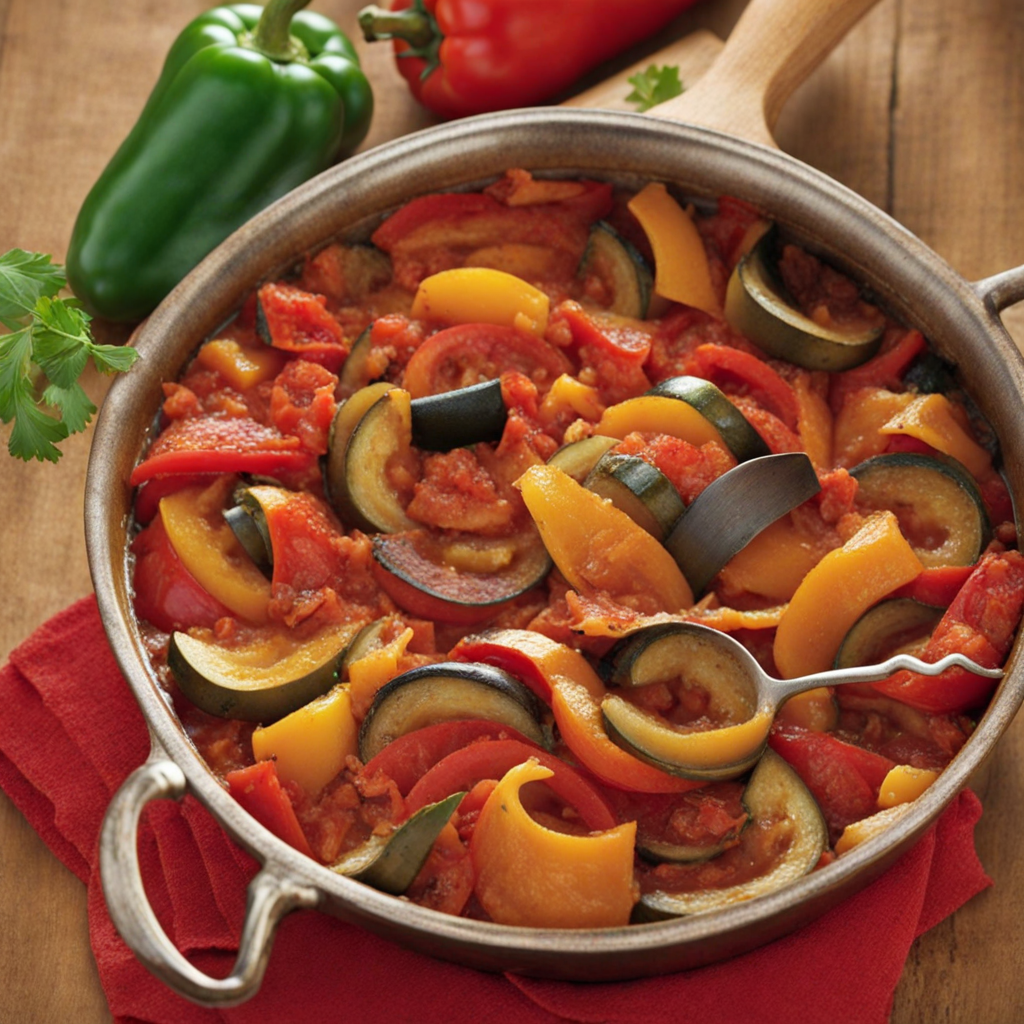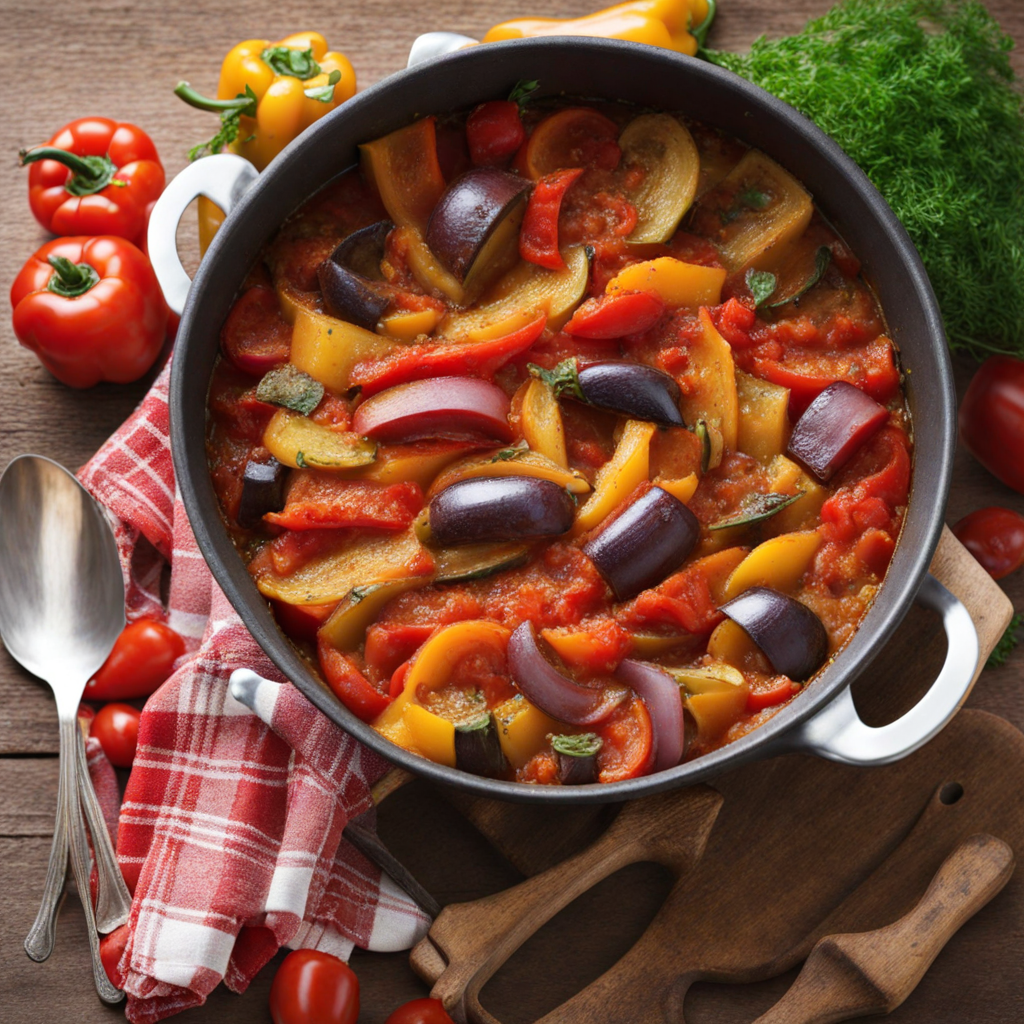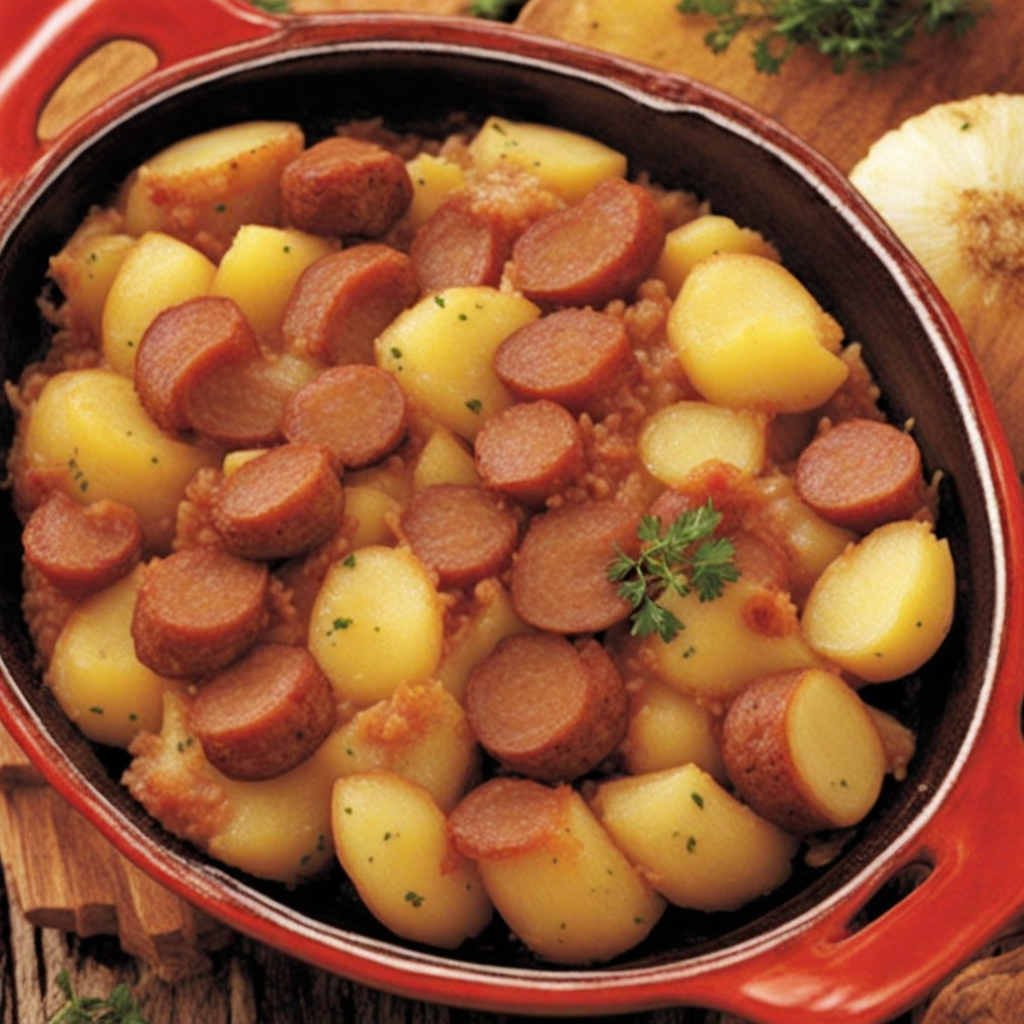Hungarian Ratatouille
Hungarian Ratatouille is a vibrant and hearty dish that showcases the rich agricultural bounty of Hungary. This delightful variation of the classic French ratatouille incorporates a medley of fresh seasonal vegetables, including eggplant, bell peppers, zucchini, and ripe tomatoes, all sautéed to perfection. The dish is enhanced with aromatic herbs such as paprika, a staple in Hungarian cuisine, which adds a warm, smoky flavor and a beautiful red hue. The combination of these ingredients creates a colorful and appetizing presentation, inviting food lovers to delve into its rustic charm. The culinary magic of Hungarian Ratatouille lies in its unique seasoning profile. Alongside the traditional herbs, you will often find the inclusion of caraway seeds and garlic, which infuse the dish with an earthy depth and a touch of warmth. Occasionally, a hint of heat from chili peppers is added, giving the dish a delightful kick. As the vegetables simmer together, their natural sweetness is brought to the forefront, resulting in a harmonious balance of flavors that is both comforting and satisfying. Served warm or at room temperature, Hungarian Ratatouille can be enjoyed as a main dish or a side, perfectly complementing grilled meats or crusty bread. It embodies the essence of rustic Hungarian cooking, where simplicity and quality of ingredients reign supreme. Whether you are a seasoned foodie or simply looking to explore new culinary horizons, this dish promises to transport your taste buds to the heart of Hungary, offering a delightful and memorable experience.
How It Became This Dish
Lecsó: A Culinary Tradition of Hungary Lecsó, a hearty dish synonymous with Hungarian comfort food, beautifully embodies the essence of the region's agricultural bounty and culinary creativity. This vibrant vegetable stew, primarily made from tomatoes, peppers, onions, and spices, has a rich history that reflects not only the evolution of Hungarian cuisine but also the cultural and social dynamics of the country. Origins of Lecsó The roots of lecsó can be traced back to the agricultural practices of the Hungarian people, particularly in the Great Hungarian Plain, where the fertile soil and favorable climate have allowed for the flourishing of various vegetables, especially peppers and tomatoes. The origins of the dish can be linked to the 19th century, during which time Hungary was undergoing significant agricultural and societal changes. The introduction of new crops from the Americas, including bell peppers and tomatoes, revolutionized local cuisine, allowing for the creation of new dishes that highlighted these vibrant ingredients. While lecsó is often associated with Hungary, its culinary lineage also connects to other Central European cuisines, particularly those of neighboring countries like Slovakia and Austria. The name "lecsó" is thought to derive from the Slovak word "lečo," which emphasizes the interconnectedness of regional cooking traditions. In fact, lecsó bears similarities to the Spanish ratatouille and the French piperade, demonstrating how various cultures interpret and adapt similar ingredients and cooking techniques. Cultural Significance Lecsó is more than just a dish; it holds cultural significance for the Hungarian people. It is a staple that represents the spirit of communal cooking and the importance of sharing meals with family and friends. Traditionally, lecsó is prepared in large batches, especially in the summer months when vegetables are abundant. This aligns with the Hungarian practice of preserving the harvest, as families would often make larger quantities to be enjoyed throughout the season. The dish is also a symbol of resourcefulness. Historically, lecsó has been a way to utilize leftover vegetables, making it a beloved choice for thrifty cooks. The flexibility of the recipe allows for a variety of interpretations; depending on the season and availability of ingredients, one might include sausage, eggs, or even rice, creating a uniquely personal version. This adaptability speaks to the heart of Hungarian culinary philosophy: a celebration of freshness, seasonality, and simplicity. Development Over Time Over the years, lecsó has evolved, both in its preparation and presentation. In its traditional form, the dish is made by sautéing onions in lard, adding diced peppers and tomatoes, and seasoning with paprika—an essential spice in Hungarian cuisine. This simple yet flavorful combination forms the base of lecsó, but the dish has seen numerous variations. In the early 20th century, as Hungary’s urban centers began to grow, the preparation of lecsó adapted to modern lifestyles. Urbanization led to changes in eating habits, with an increased emphasis on quicker, more convenient meals. As a result, some families began to prepare lecsó using store-bought canned tomatoes and pre-packaged spices, making the dish more accessible to those with limited time. Nevertheless, the core elements of lecsó remained integral, showcasing the enduring appeal of the recipe. The post-World War II era brought about significant changes in Hungary, particularly during the socialist period. Food scarcity and rationing made fresh ingredients harder to come by, yet lecsó persisted as a popular dish due to its reliance on seasonal vegetables and ease of preparation. During these times, lecsó became a symbol of resilience, embodying the ability to create something flavorful and satisfying from limited resources. In recent decades, as Hungary transitioned to a market economy and embraced globalization, the culinary landscape has expanded. Chefs and home cooks alike have begun to experiment with lecsó, incorporating international flavors and techniques. Modern variations may include ingredients such as zucchini, eggplant, or even exotic spices, reflecting the influence of globalization on traditional dishes. This evolution has kept lecsó relevant, allowing it to maintain its status as a comfort food while also appealing to contemporary palates. Lecsó Today In contemporary Hungary, lecsó remains a beloved dish, often served at family gatherings, summer barbecues, and traditional feasts. It has secured its place in the national culinary identity, with numerous regional variations celebrated across the country. For example, in the southern regions, lecsó may lean towards a spicier profile, while in northern Hungary, it might incorporate smoked meats for added depth. The resurgence of interest in traditional cooking methods and local ingredients has further solidified lecsó's status in modern Hungarian cuisine. Farmers' markets and local festivals often feature lecsó as a highlight, showcasing seasonal produce and artisanal interpretations of the dish. Culinary tourism has also contributed to the dish’s popularity, with tourists eager to experience authentic Hungarian cuisine and the warmth of its culinary traditions. Conclusion Lecsó is much more than a simple vegetable stew; it is a reflection of Hungary's agricultural heritage, cultural identity, and culinary evolution. From its humble beginnings to its modern-day adaptations, lecsó encapsulates the spirit of Hungarian cooking—emphasizing the importance of community, resourcefulness, and the celebration of seasonal ingredients. As it continues to evolve, lecsó remains a cherished dish, connecting generations of Hungarians through shared meals and the memories they create around the table. Whether enjoyed at home or in a bustling restaurant, lecsó embodies the warmth and hospitality that characterize Hungarian culture, ensuring its place in the hearts and kitchens of many for years to come.
You may like
Discover local flavors from Hungary







